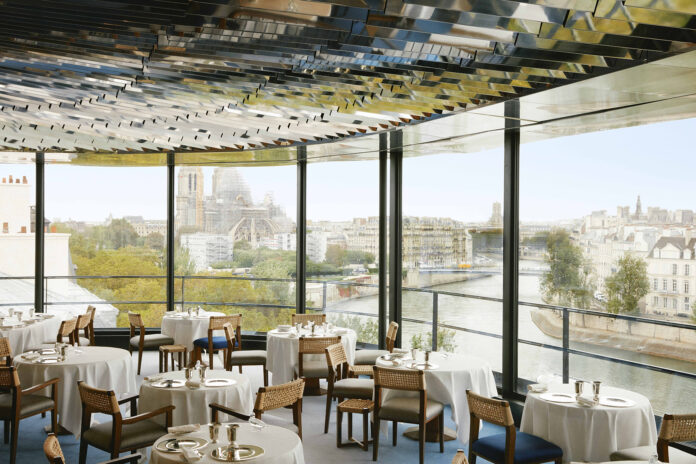In April 2022, La Tour d’Argent closed its doors for an extensive historical renovation, marking the most comprehensive overhaul in its long existence. The last major renovation had occurred in 1936, relocating the restaurant to the 6th floor. This current renovation represents the most extensive transformation in its history.
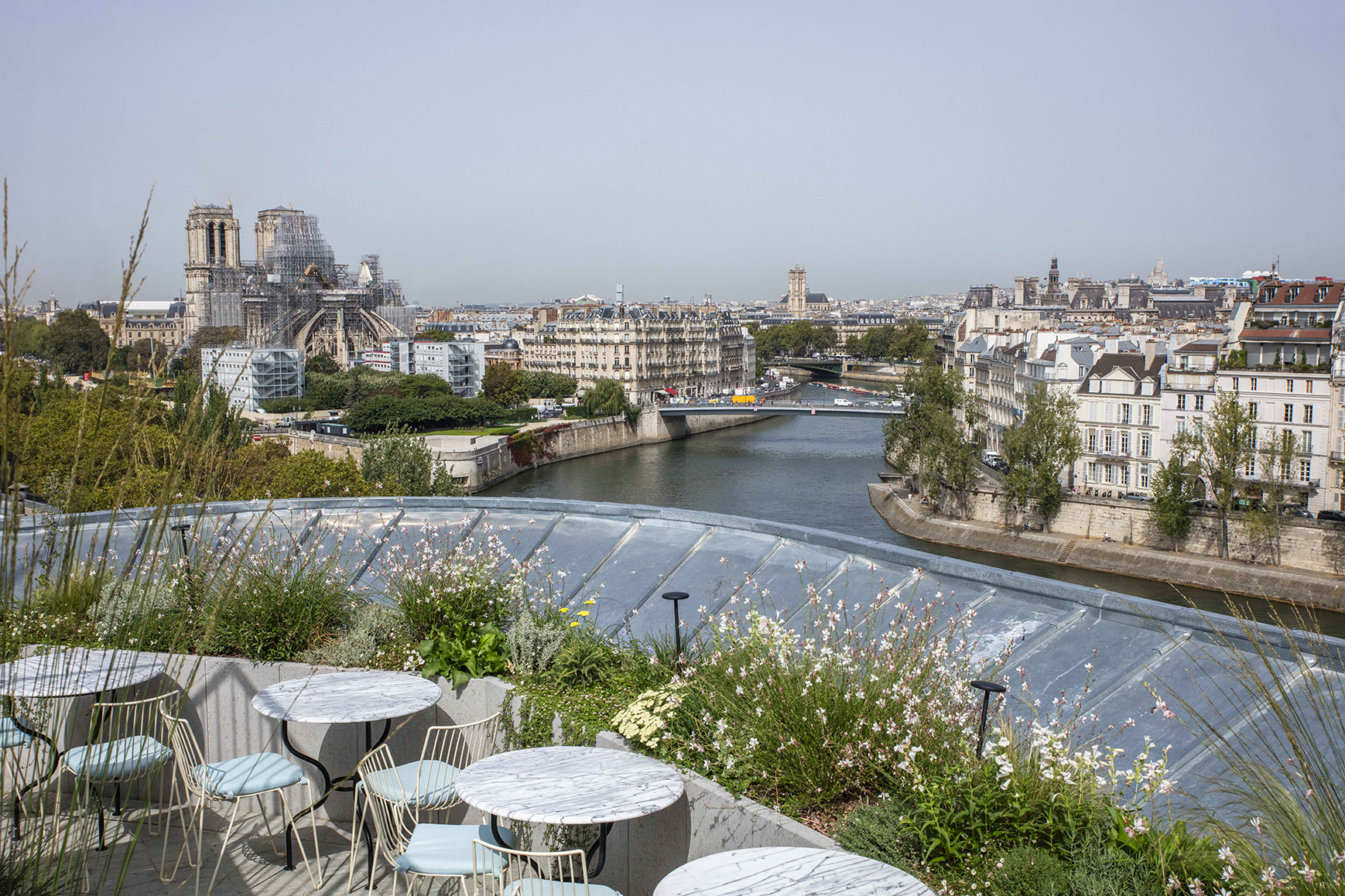
Having its origins dating back to 1582, La Tour d’Argent had not witnessed any substantial changes since 1936 when the restaurant, situated in the 5th arrondissement of Paris, ascended to the 6th floor. This esteemed establishment, renowned for its contribution to Parisian gastronomy, now embarks on a fresh chapter in its narrative. After an extensive year-long renovation project helmed by architect Franklin Azzi, La Tour d’Argent is preparing to reopen its doors, unveiling entirely new, tailor-made spaces that promise to provide guests with immersive experiences, spanning from the ground floor to the rooftop.
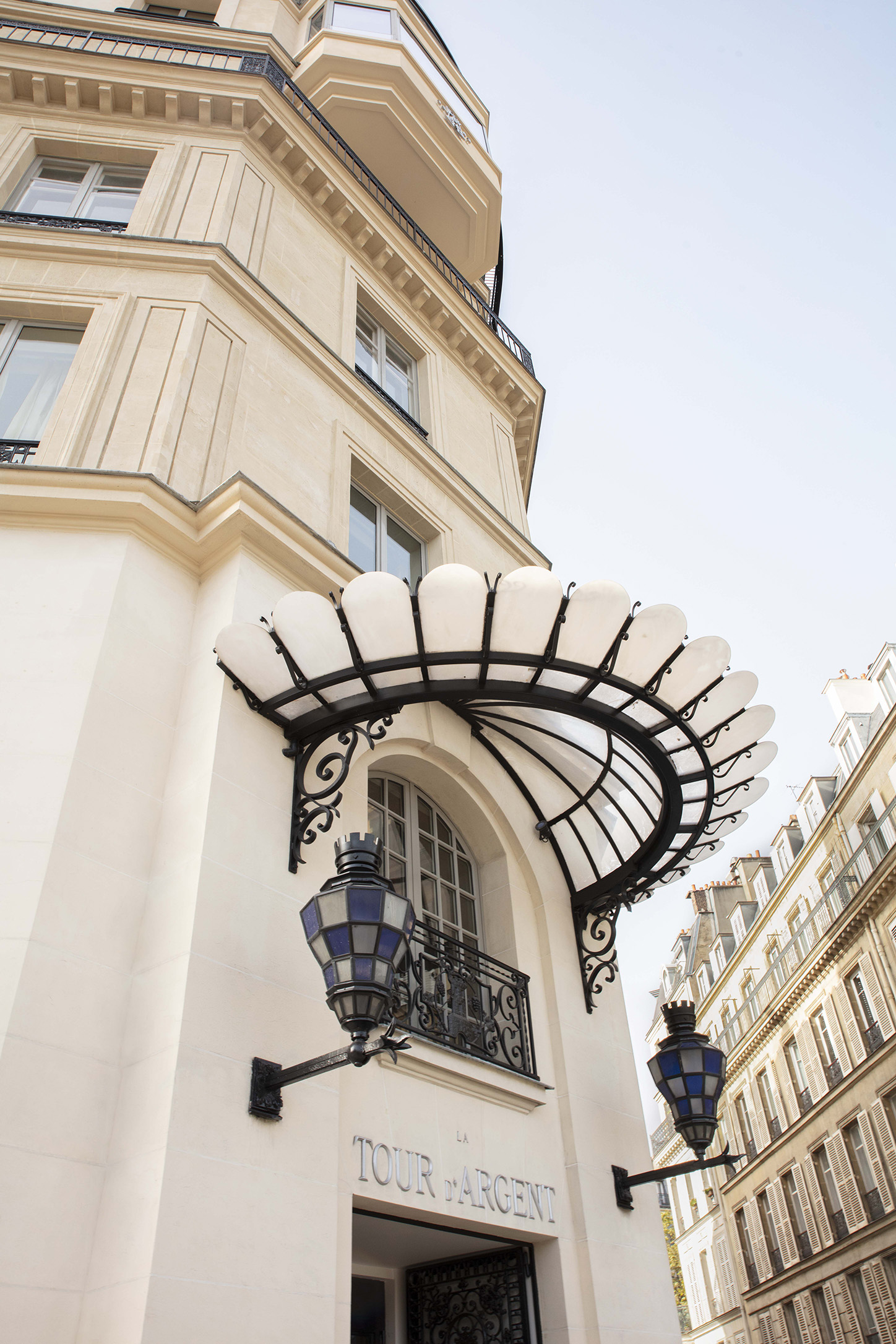
Since 1936, the restaurant had remained unaltered. In 2023, the institution reopens its doors following a colossal undertaking that lasted a year, with guidance from architect Franklin Azzi and the skilled craftsmanship of many artisans. In doing so, La Tour d’Argent steps into a new era, embracing the 21st century while preserving the enduring values that have defined its identity for several decades: tradition, authenticity, elegance, and excellence.
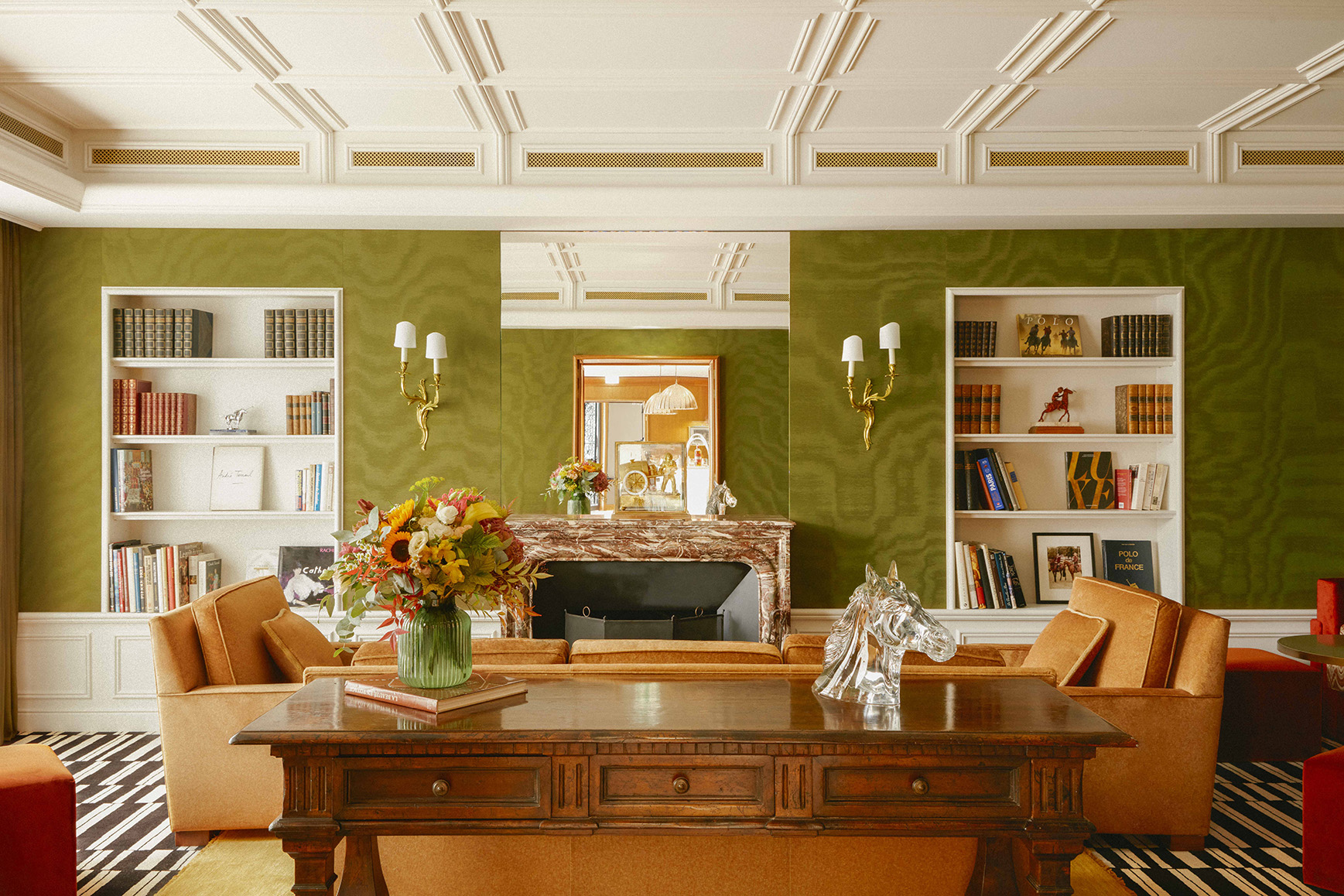
Inherited from Le Café Anglais, the wine cellar of La Tour d’Argent has contributed to the establishment’s global renown for more than a century. Previously, to acquire one of the cellar’s 300,000 bottles, one had to be seated at the gastronomic restaurant. However, the substantial wine catalog, which weighs over 8 kilograms, is now accessible at Le Bar des Maillets d’Argent.
The cellar welcomes both Parisians and curious visitors who are eager to explore the legendary treasures of La Tour d’Argent, an establishment renowned for its wine selection. This presents an opportunity for individuals to indulge themselves and savor an exceptional wine, one that has matured and been meticulously cared for in the cellars by their guardian, Victor Gonzàlez, who serves as the Executive Head Sommelier of La Tour, along with his dedicated team.
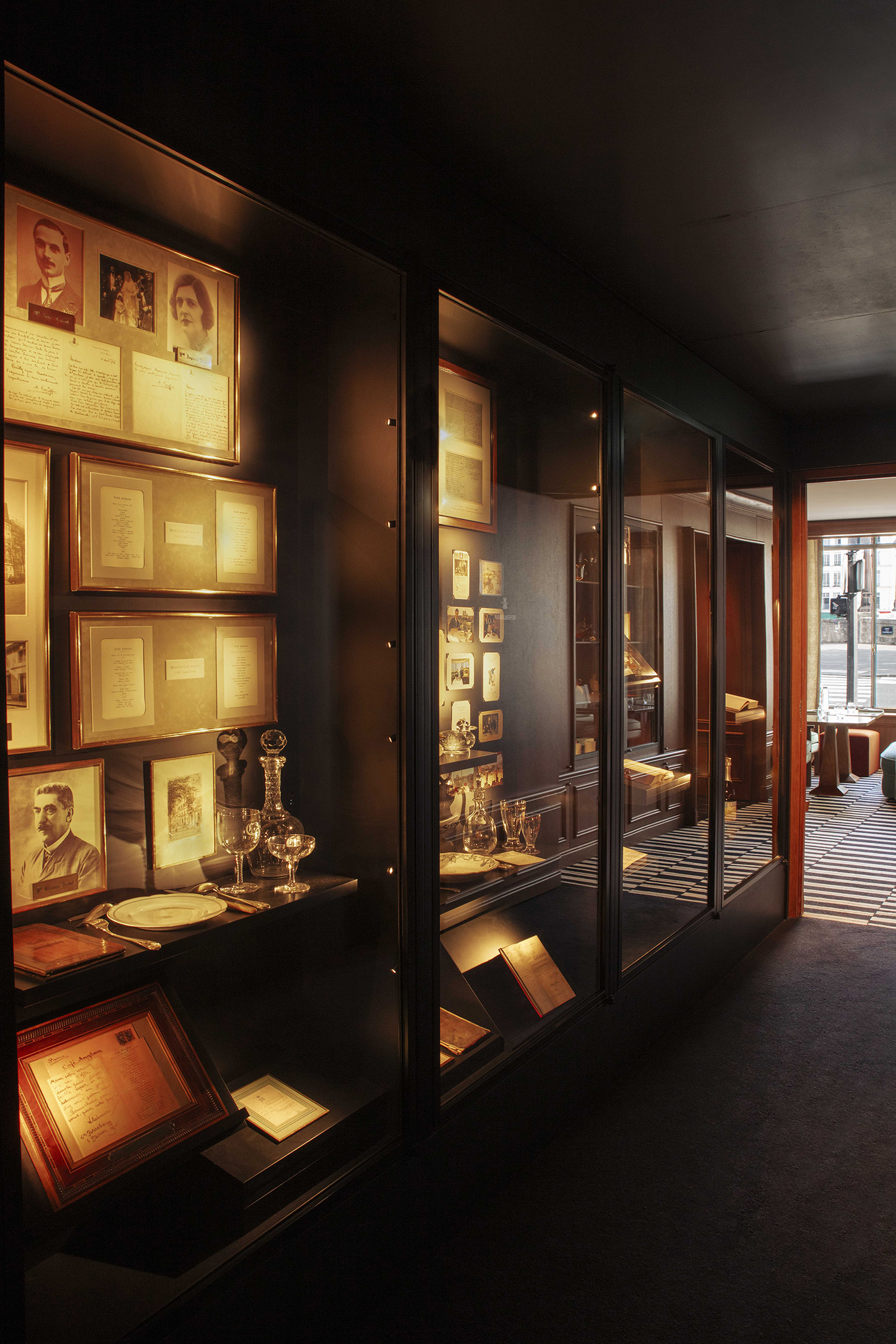
As one enters the premises, they encounter three successive rooms leading from the street towards the intimate world of La Tour d’Argent. The first of these is the lobby, capturing immediate attention with its splendid chandelier. This chandelier, unlike its classic predecessors, is a creation of architect Franklin Azzi. It comprises 277 extra-clear glass droplets illuminated with neon lighting, suspended from six chrome steel rings. The visible electric wires exemplify the architect’s fusion of styles, blending elements of Art Deco and industrial design.
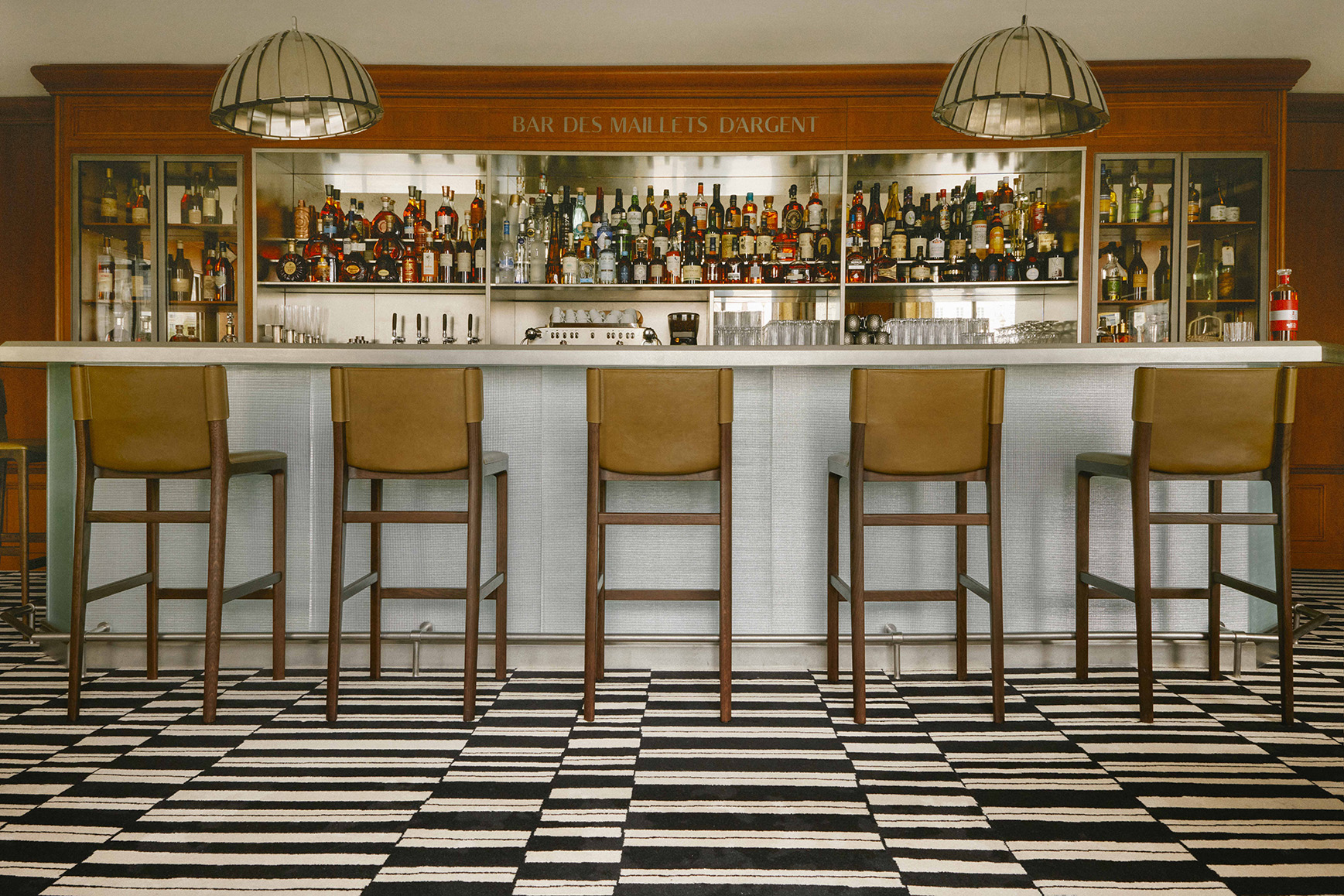
Next in line is the bar of Les Maillets d’Argent, a cozy space reminiscent of an English club. It features oak paneling, green armchairs, and a custom-made pewter counter. This space pays homage to Claude Terrail, father of the current owner, André Terrail. Claude, a dedicated polo enthusiast, led his team to victory in four Paris Opens. The decor is adorned with some of his photographs and trophy cups.
Adjacent to the bar is Salon Frédéric, arranged around a hearth. This space serves as a tribute to another significant figure in La Tour d’Argent’s history, Frédéric Delair. He owned the establishment from the mid-19th century to 1911 and is renowned as the inventor of the signature recipe for pressed duck.
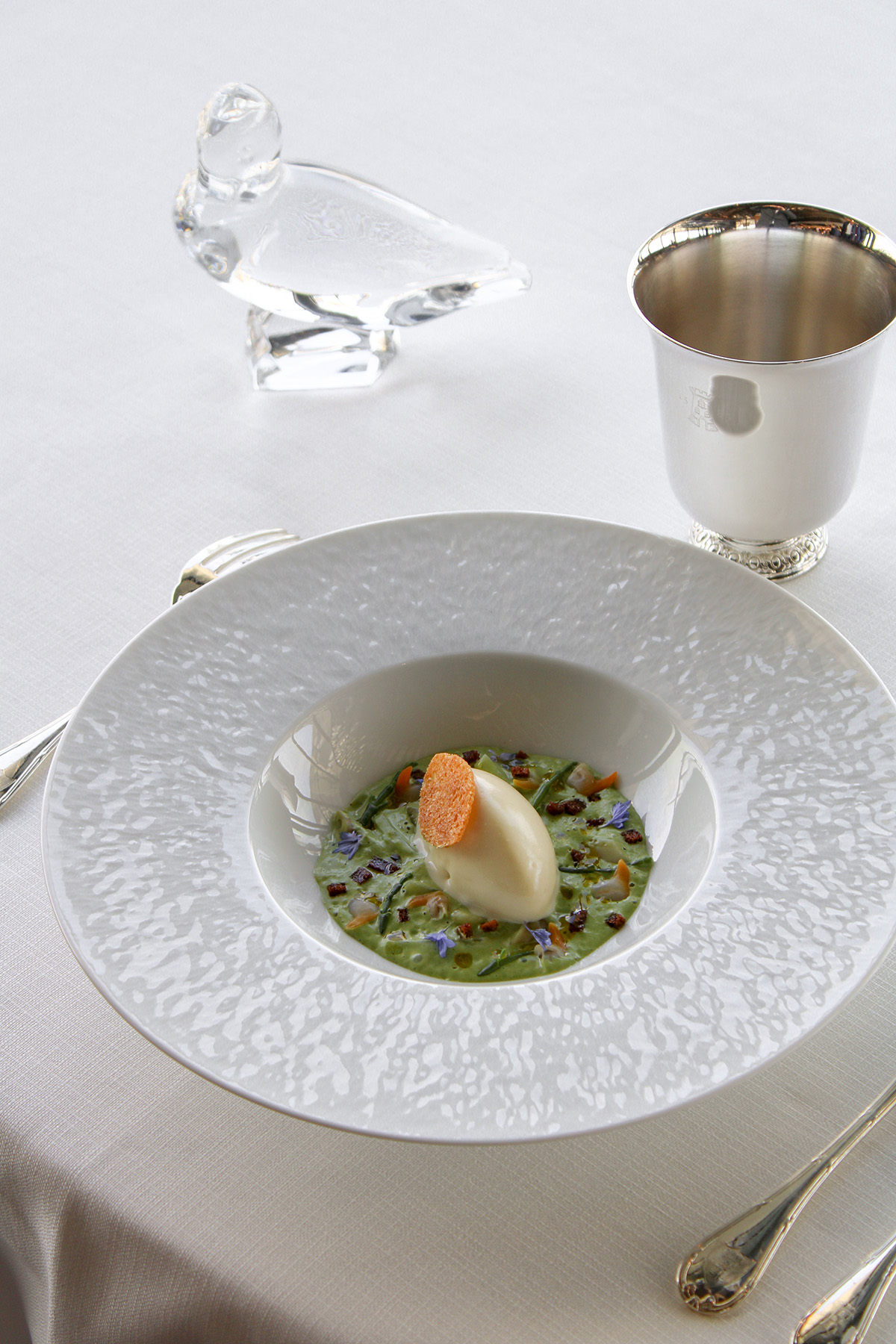
Starting at 9:00 a.m., guests can enjoy the Left Bank’s most refined “café-croissant.” At lunchtime, Chef Yannick Franques offers reinterpretations of La Tour d’Argent’s culinary classics, such as the iconic quenelles, duck, and foie gras, all presented on the menu with creative twists, like a Champagne sabayon, ravioli, and pâté en croute.
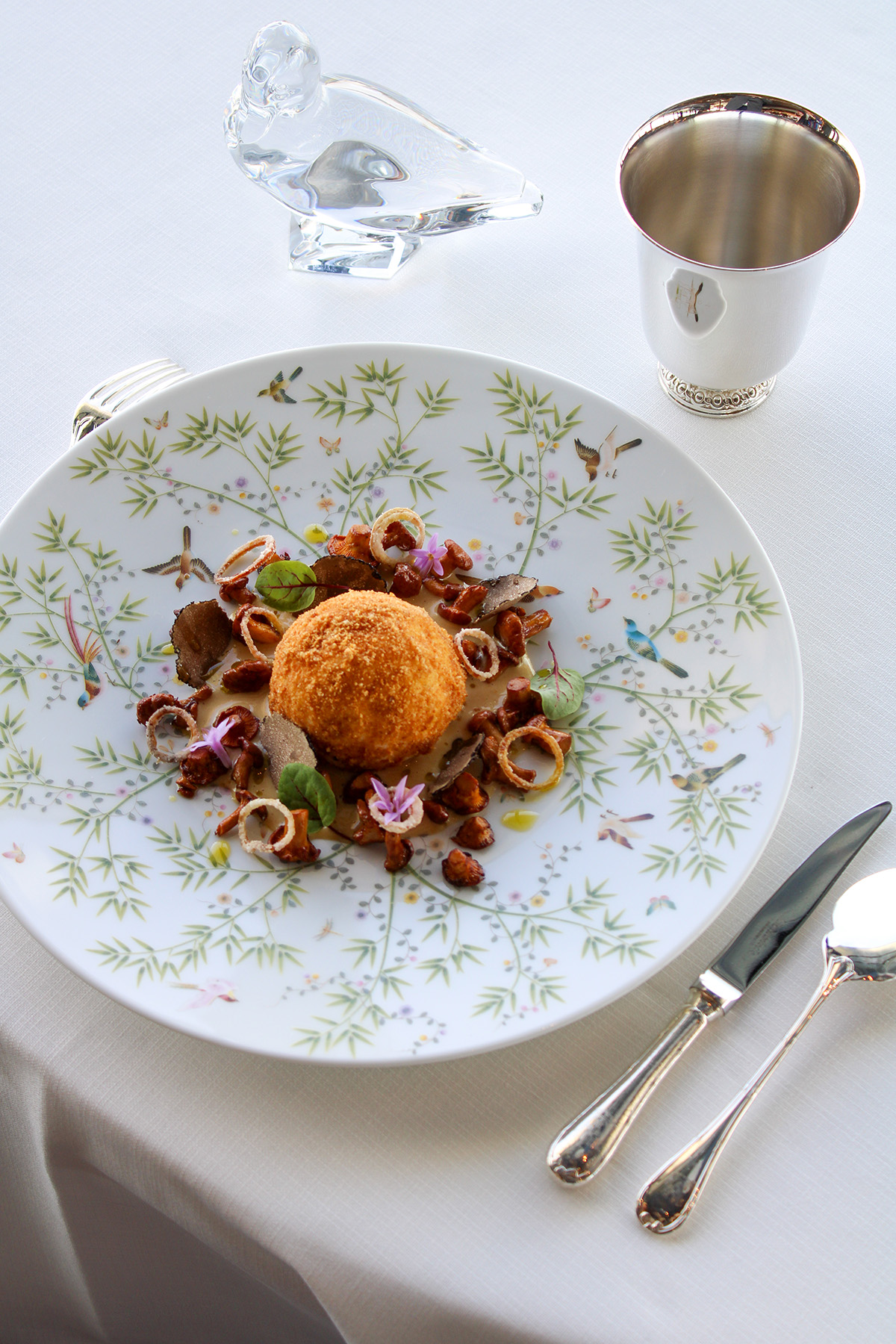
For those with a sweet tooth, a selection of pastries enhances the afternoon experience. As the cocktail hour arrives, La Tour d’Argent rekindles its historical fondness for a French classic: cognac. The establishment has partnered with La Maison Camus, known for its five generations of expertise, to craft a signature Bar des Maillets d’Argent cognac. This cognac can be explored on the cocktail list, featuring recipes “for connoisseurs,” including the Side Car, a blend of cognac, Triple Sec, and lemon juice, and the Horse’s Neck, André Terrail’s favorite, made with cognac, Angostura bitters, ginger ale, and lemon zest. The offering is completed by a fine collection of aged cognac from the cellar of La Tour d’Argent, ensuring a memorable experience for evening guests.
The final segment, referred to as the black room, serves as a transitional space leading to the elevator. Historical photographs, iconic menus from the restaurant’s past, and vintage gastronomic guides are displayed in showcases along the corridor walls, immersing visitors in the rich history of this institution, which has graced the Quai de la Tournelle since 1582.
Gastronomic Restaurant
Upon exiting the elevator, one’s journey through the various floors leads directly to a captivating spectacle presented by La Tour d’Argent’s restaurant, offering an unobstructed view of the City of Light. What was already impressive has now become truly astonishing. The removal of once-present pillars in the dining room, along with the use of glass akin to that found in jewelry store windows, has entirely opened up the vista. This transformation provides a unique sensation of floating above the city.
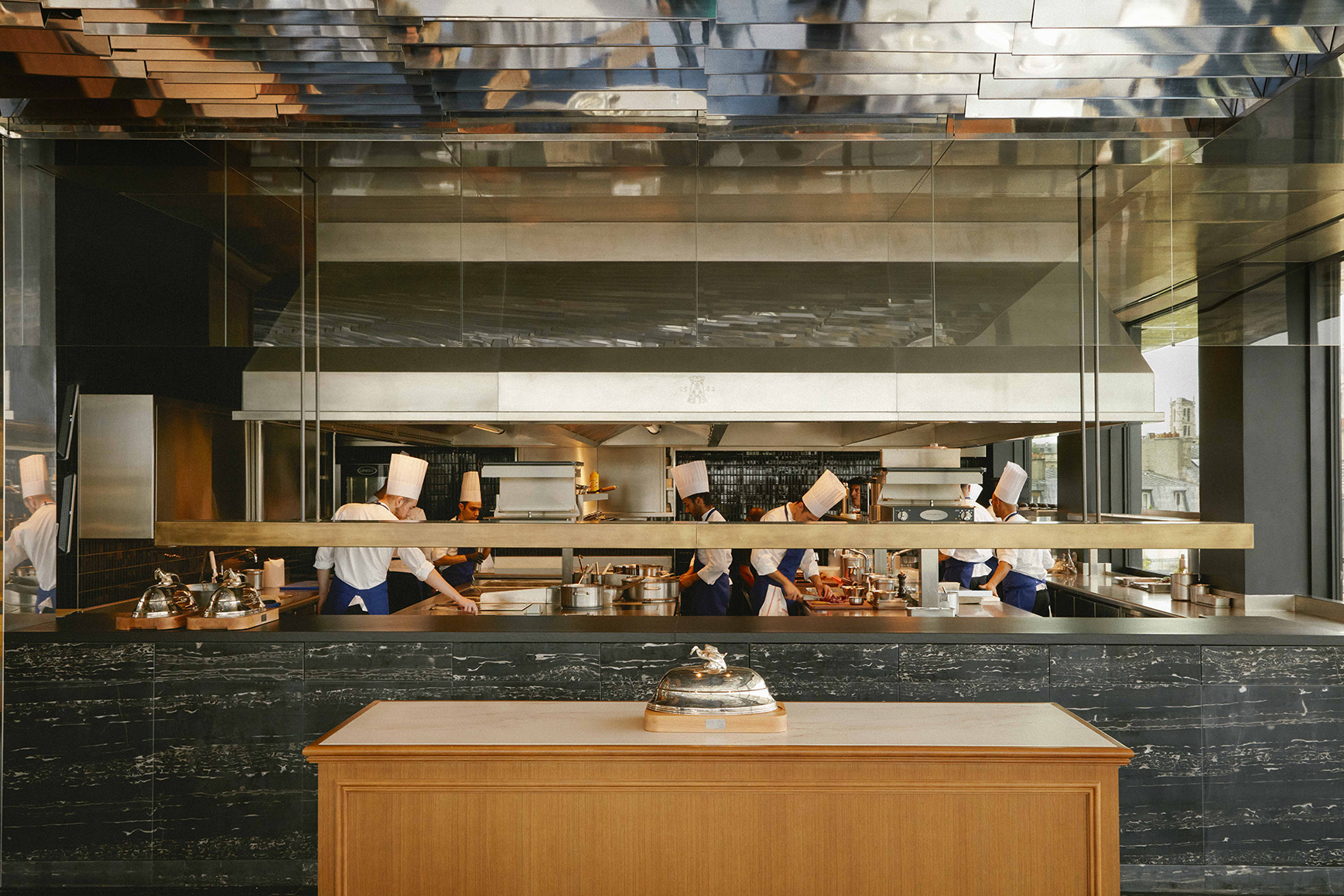
The restaurant’s new decor continually weaves the intimate history between Paris and this legendary establishment. Above the restaurant, which retains its iconic blue hue, a striking ceiling crafted from silver metal with kinetic effects is visible from the street. At night, it becomes a captivating focal point, illuminating La Tour d’Argent as a beacon along the banks of the Seine. On the floor, the artist Margaux Lavèvre has reinterpreted the meandering flow of the nearby Seine with a custom-designed carpet.
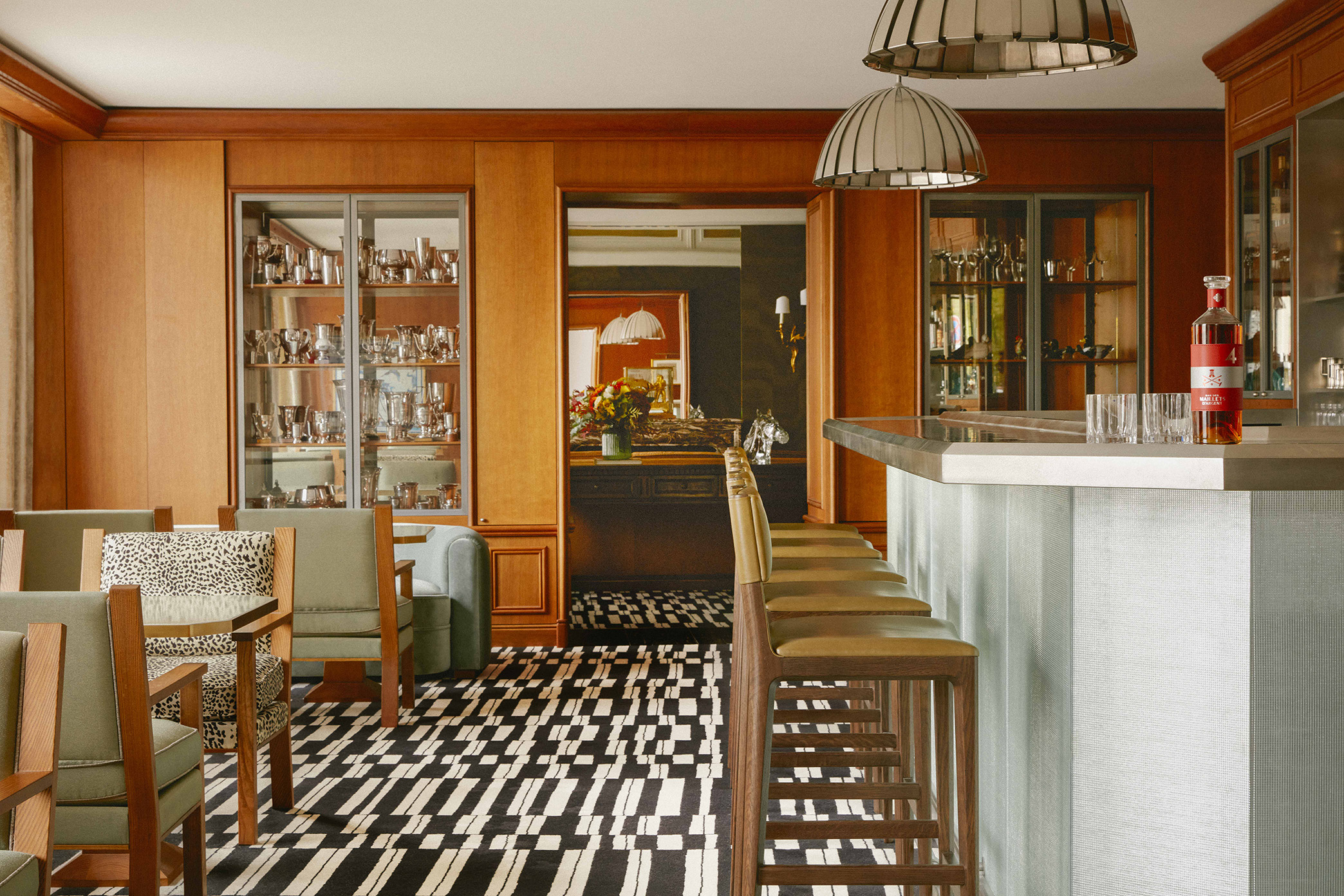
This unique creation was entrusted to the Pierre Frey studios. Additionally, chairs and armchairs featuring hessian yarn backs, designed by Franklin Azzi and inspired by La Tour’s archives, now grace the space. In fact, similar chairs with woven backs were part of the dining room’s decor in the 1930s. The traditional map of Paris has been replaced by a bespoke artwork, characterized by shimmering colors, created by contemporary artist Antoine Carbonne, symbolically merging the history of La Tour with that of Paris.
Upon regaining composure, guests are met with more surprises. Driven by a desire to challenge conventions while remaining loyal to traditions, the concept of transforming this seemingly unchangeable and impenetrable space was conceived. Two guiding principles underpinned this leap into the contemporary era: transparency and closeness. The kitchen is now fully visible to the dining area, as partition walls have been removed, allowing the culinary performance to take place with complete transparency. Behind the ovens, Chef Yannick Franques, a “Meilleur Ouvrier de France,” and his kitchen brigade prepare the iconic recipes that have defined La Tour’s legacy, along with new creations that promise to ensure its ongoing success.
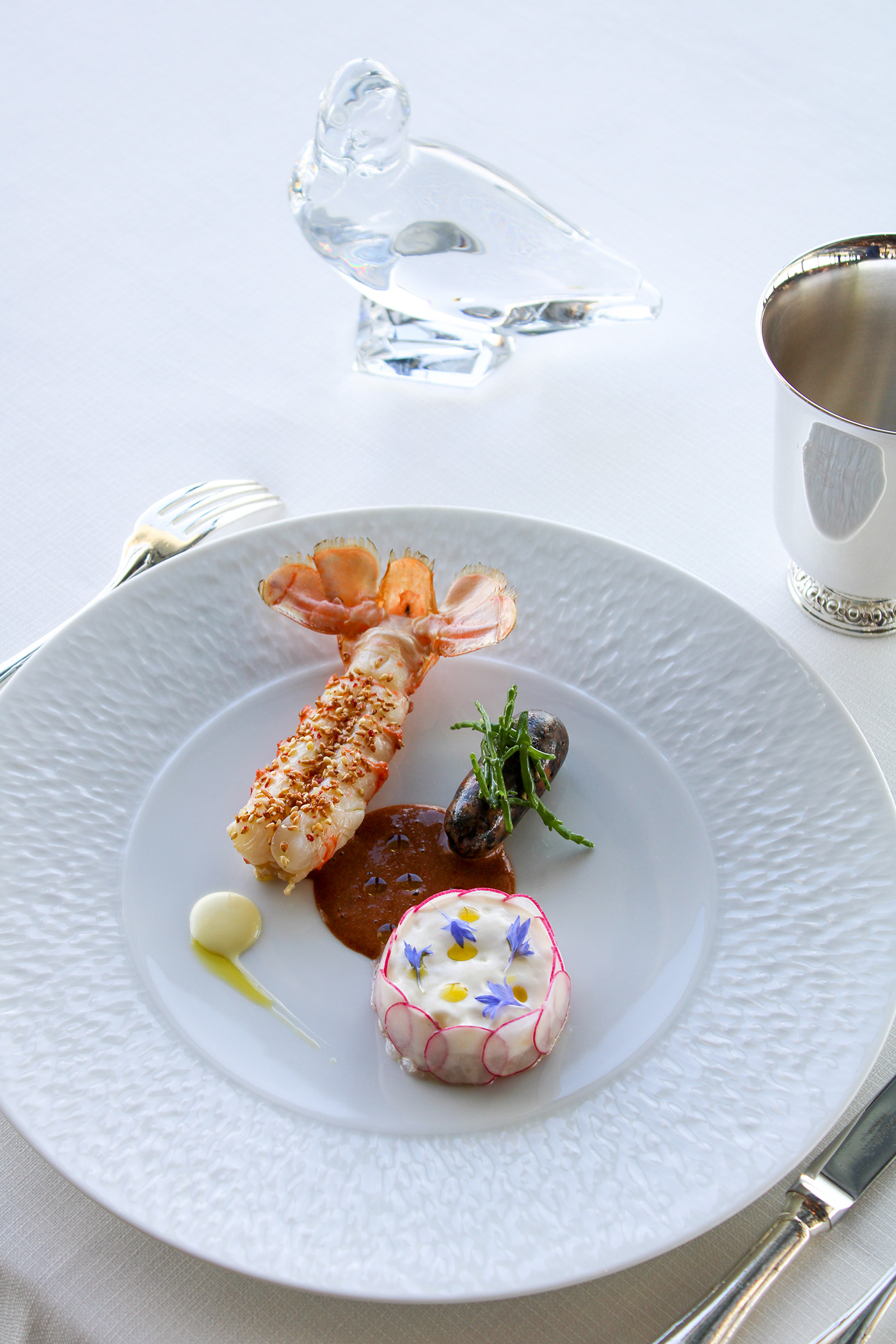
Executive Head Sommelier Victor Gonzàlez, responsible for one of the world’s finest wine cellars featuring 15,000 references and over 300,000 bottles, highlights exclusive French vineyard selections. The wine bible, a symbolic object in La Tour itself, stands as a testament to the establishment’s commitment to excellence.
In the refurbished dining space, Chef Yannick Franques continues to lead the culinary endeavors of the restaurant, elevating its culinary identity while preserving cherished traditions. He presents a contemporary twist that aligns with modern tastes and the expectations of the restaurant’s discerning patrons. Of course, the iconic duck dish remains a fixture on the menu.
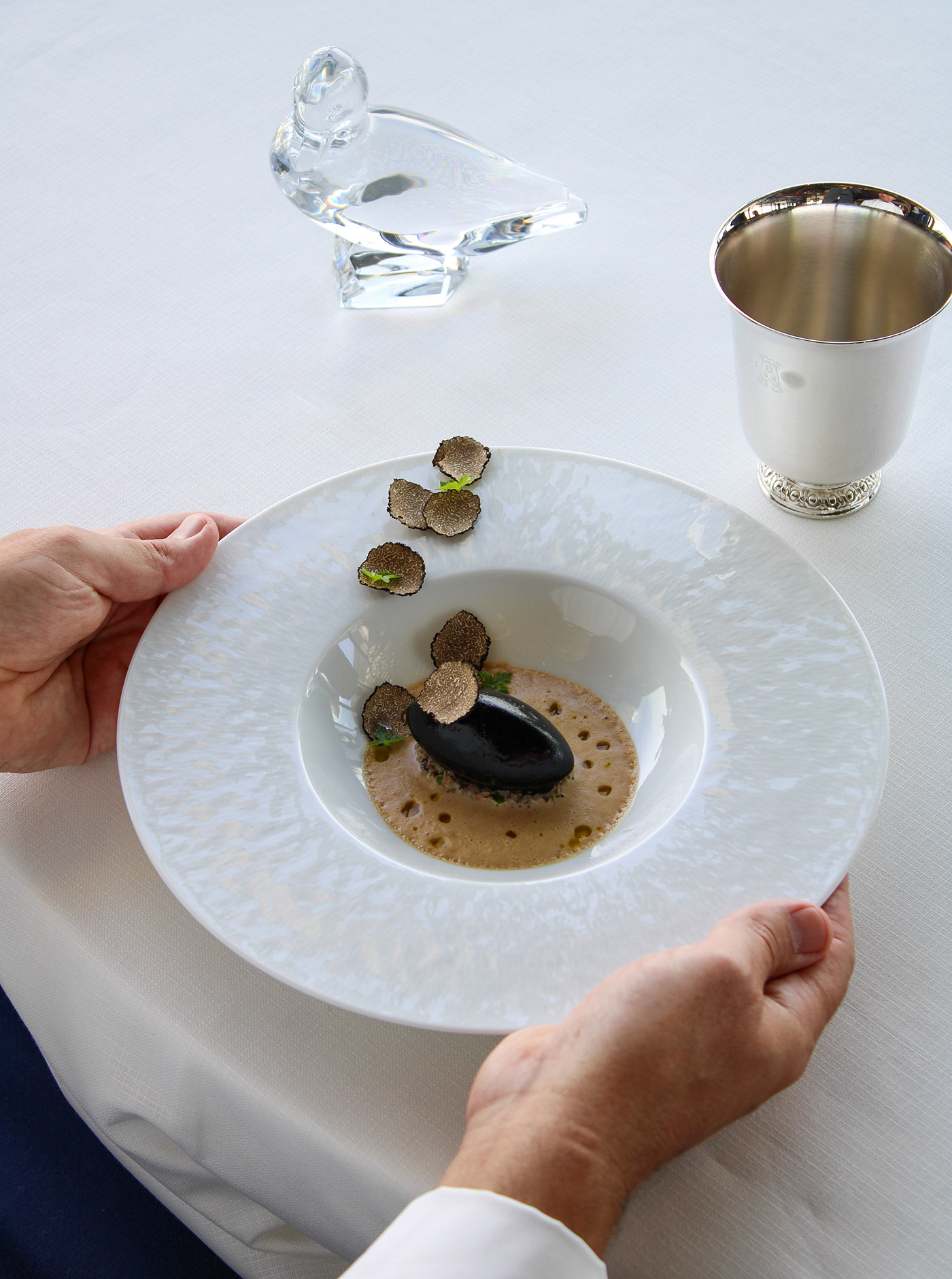
Served with a flourish, the renowned duck and its signature sauce are expertly carved before the guests, on the stage of the equally famous “théâtre à canard,” which has now reclaimed its position as a central piece of the decor.
The menu continues to feature the restaurant’s legendary recipes, skillfully refined to captivate the palate. Dishes like the Marco Polo duck with green pepper, highlighted by its butterfly cut presentation, the “Foie Gras des Trois Empereurs” with a new twist in its serving, the classic “Sole Cardinal,” the famous Pike quenelles, delectable Mademoiselle pancakes, and the exquisite blackcurrant soufflé all promise divine gourmet experiences for even the most discerning diners. The menu evolves in harmony with the changing weather and seasons, introducing new, previously unseen creations.
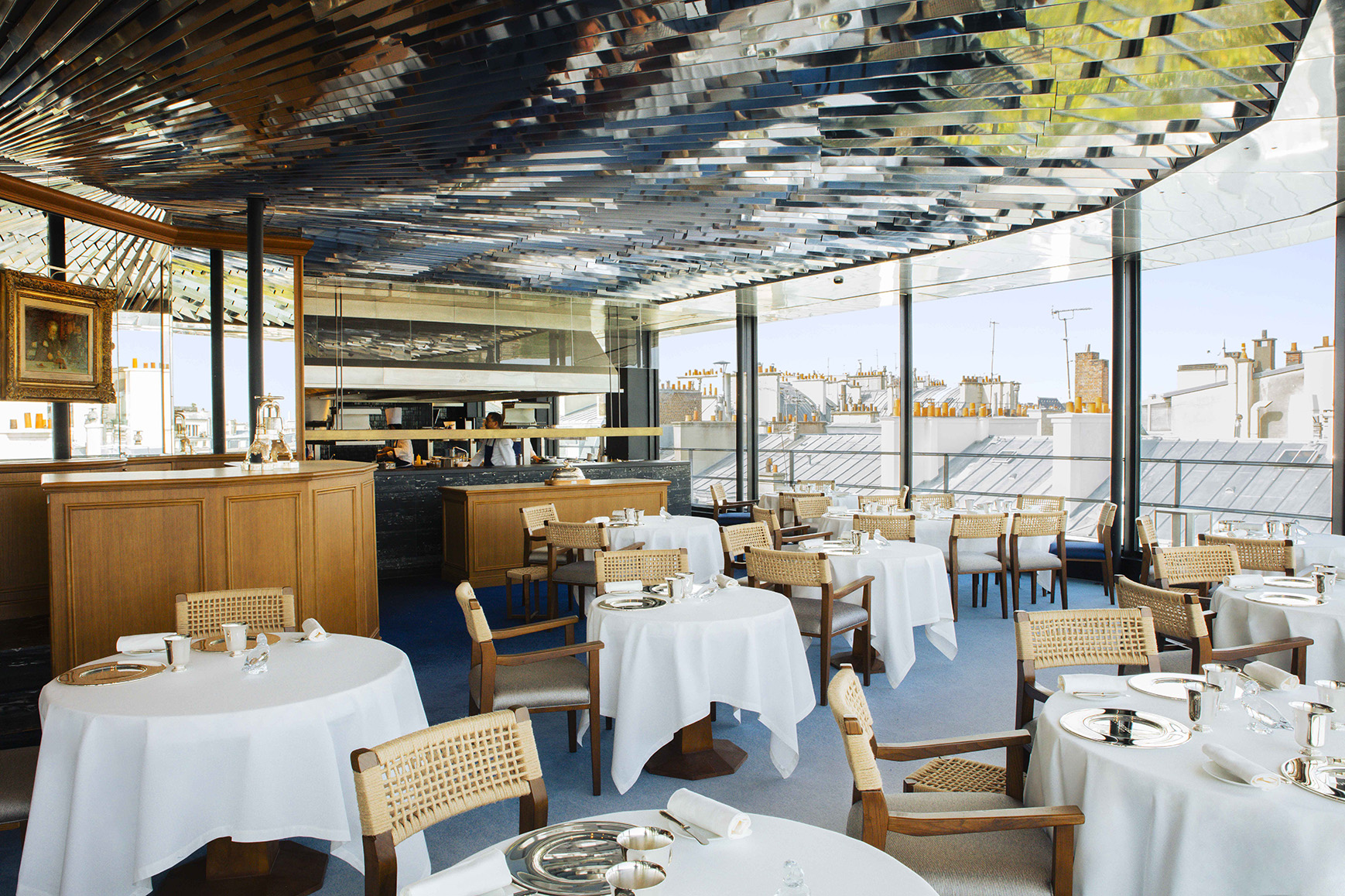
The chef predominantly sources his ingredients from the Ile-de-France region. Vegetables are cultivated at Les Alluets farm in Les Yvelines, while butter and raw cream, specially crafted for La Tour, originate from La Chalotterie farm in Seine-et-Marne. The cheese selection also pays homage to regional production, with the majority of cheeses supplied by local farms such as Sainte-Colombe, Les Grands Courbans, La Vallière, La Chalotterie, and La Fromentellerie in Seine-et-Marne, along with La Tremblaye farm and the sheep farm Les Brebis de Cravent in Les Yvelines.
With the inauguration of its splendid rooftop terrace on the 7th floor, La Tour d’Argent ascends even closer to the heavens. Undoubtedly, this stands as one of the most audacious accomplishments of the entire project. Once inaccessible, the rooftop has undergone a remarkable transformation, undergoing a metamorphosis to give birth to a wondrous terrace.
Adorned with lush plants, aromatic gardens, and expertly clad in zinc by artisan Daniel Bain, it harmoniously integrates into the Parisian rooftop landscape. The use of Vals stone slabs for the flooring imparts a mineral parquet feel. “Le Toit” now provides an enchanting high-altitude experience for approximately 30 fortunate guests, unveiling one of the most breathtaking panoramic vistas of Paris, including the iconic Notre-Dame de Paris, a close neighbor of La Tour for over four centuries.
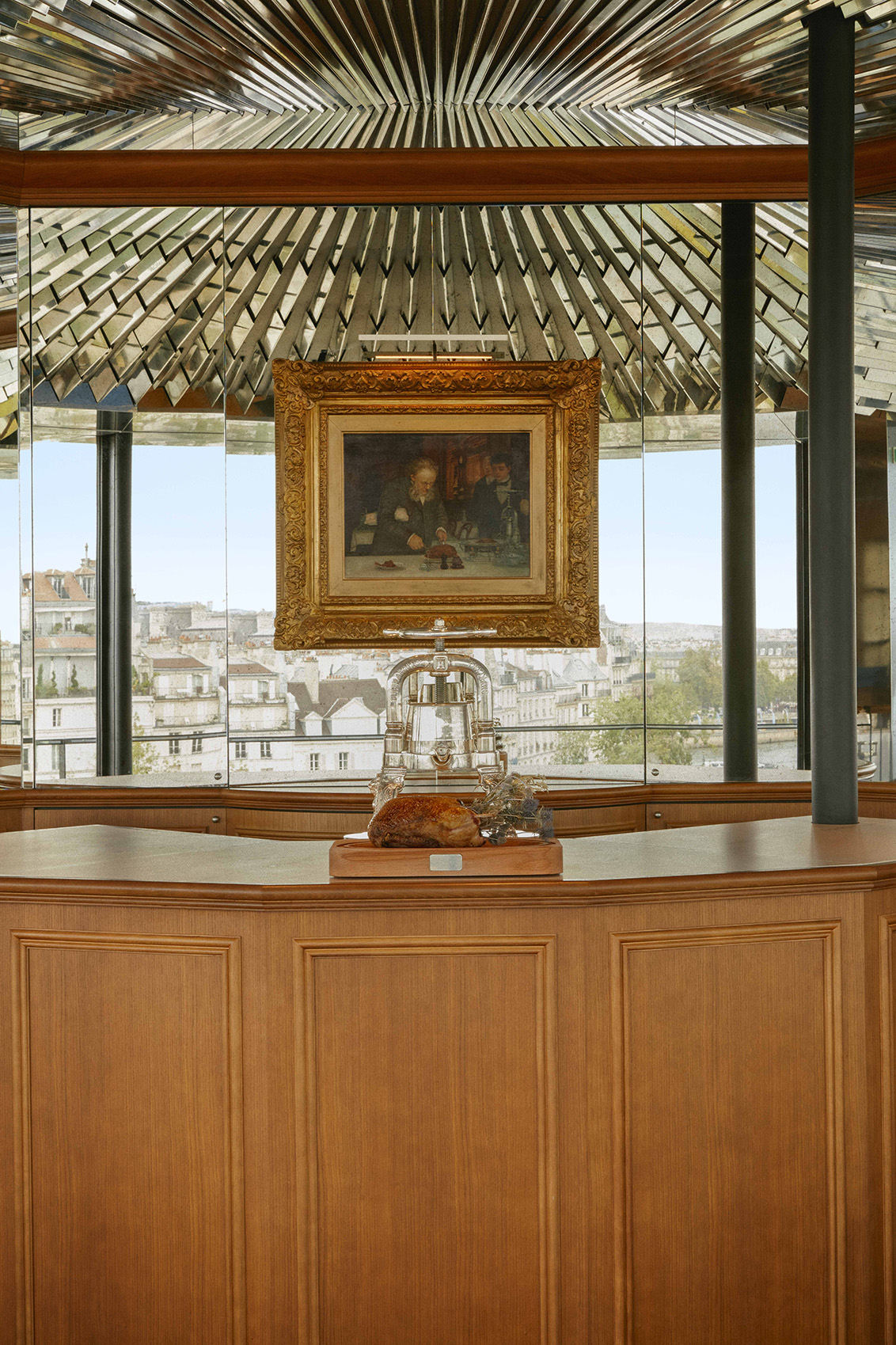
To complement this enchanting interlude, guests have the opportunity to savor exclusive champagne from La Maison Roederer, a cherished, long-standing partner and friend of La Tour d’Argent, along with specially crafted cocktails tailored for the terrace. This experience is available on weekdays from 6:30 p.m. to midnight and starting from 12 noon on weekends, contingent on the weather conditions.
Ascending a few steps higher, as an extension of the restaurant, an elevated dining area in the sky awaits eight privileged guests, promising an unforgettable and timeless moment.
L’APPARTEMENT
Another delightful surprise awaits on the 5th floor of the reopening – “L’Appartement.” This space, accessible through La Tour d’Argent or via a private entrance on Rue du Cardinal Lemoine, has been fashioned into a new Parisian pied-à-terre for Friends of La Tour, promising a blend of luxury and authenticity that immerses visitors in the La Tour experience. The transformation of this spacious, self-contained accommodation covering 150 sq.m involved the expertise of remarkable craftsmen.
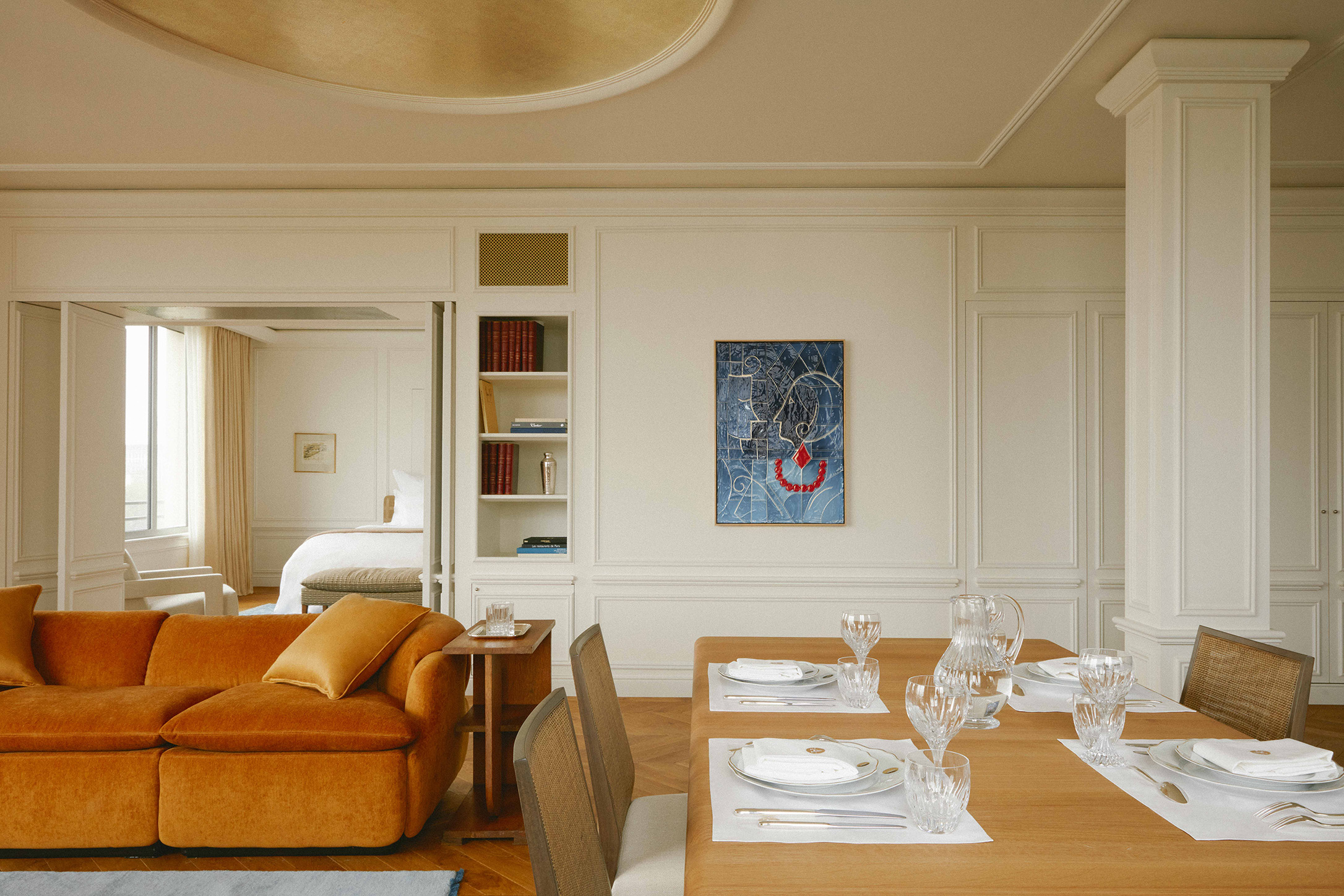
This singular form of accommodation on the premises has been meticulously designed to cater to two fortunate guests. These privileged residents benefit from a dedicated hostess, ready to ensure they enjoy a gastronomic and hospitality experience for which La Tour d’Argent is renowned. Within this generously-sized apartment, guests have the opportunity to invite their loved ones to the table, sharing in the unique moment and, most importantly, savoring the unobstructed view of the world’s most beautiful city.
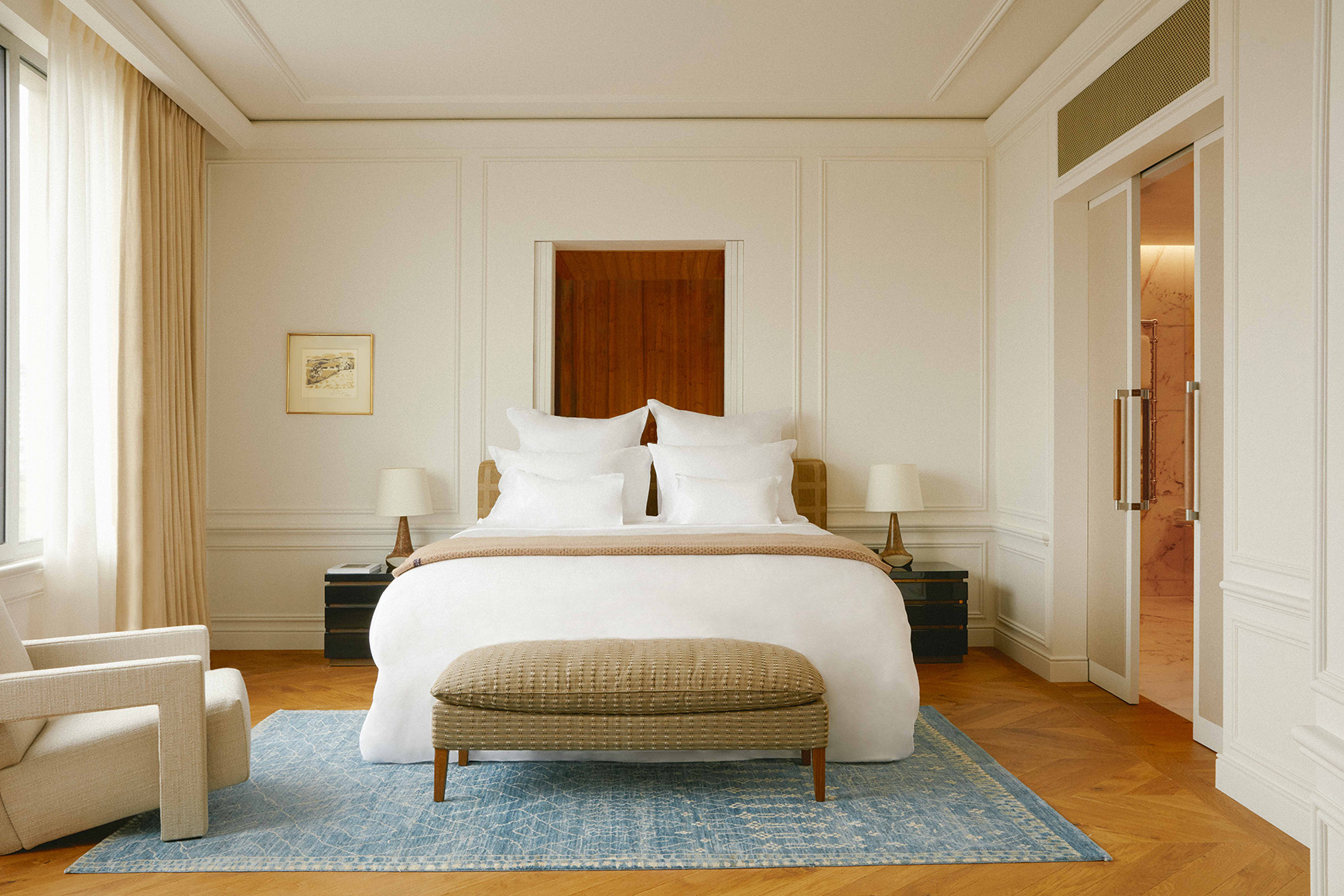
With its molded ceilings and herringbone parquet floors, the decor exudes a distinctly Parisian ambiance, transporting visitors back in time to the Terrail family’s past, particularly the women who were part of it. Souvenirs of Augusta Burdel, who once resided on this floor, are tastefully scattered throughout this expansive space.
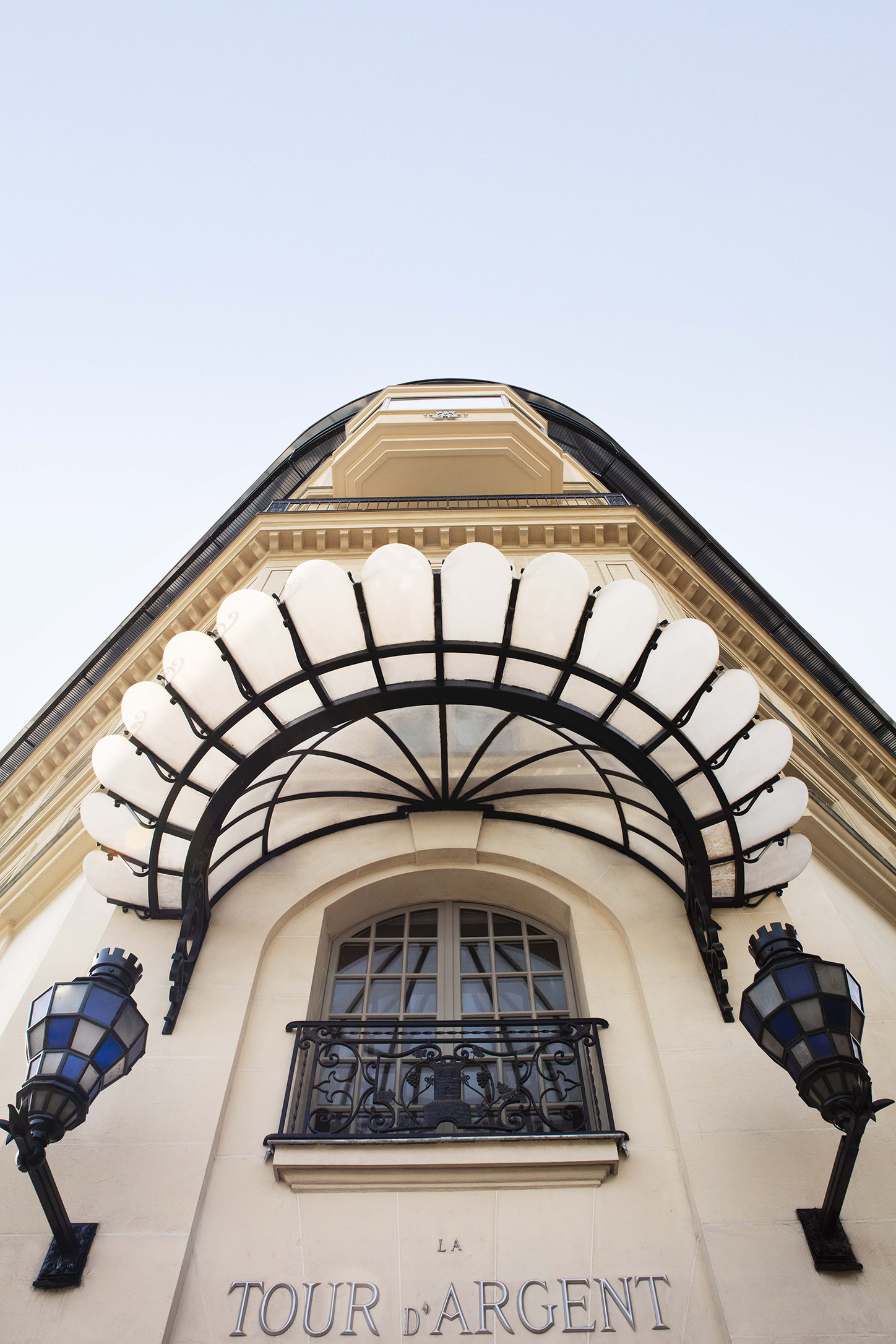
In the style of the 1930s and executed in enameled ceramic, the artwork “The Souvenir of Augusta,” crafted by ceramist Maximilien Pellet, elegantly and uniquely portrays the encounter between Augusta and her husband, André Terrail senior. Various references to Finland, including minimalist furniture and a sauna with a view, pay homage to her love for travel and the origins of Tarja Terrail, the current owner’s mother, who hails from Finland, the land of his heart.
Discover more from SNAP TASTE
Subscribe to get the latest posts sent to your email.



